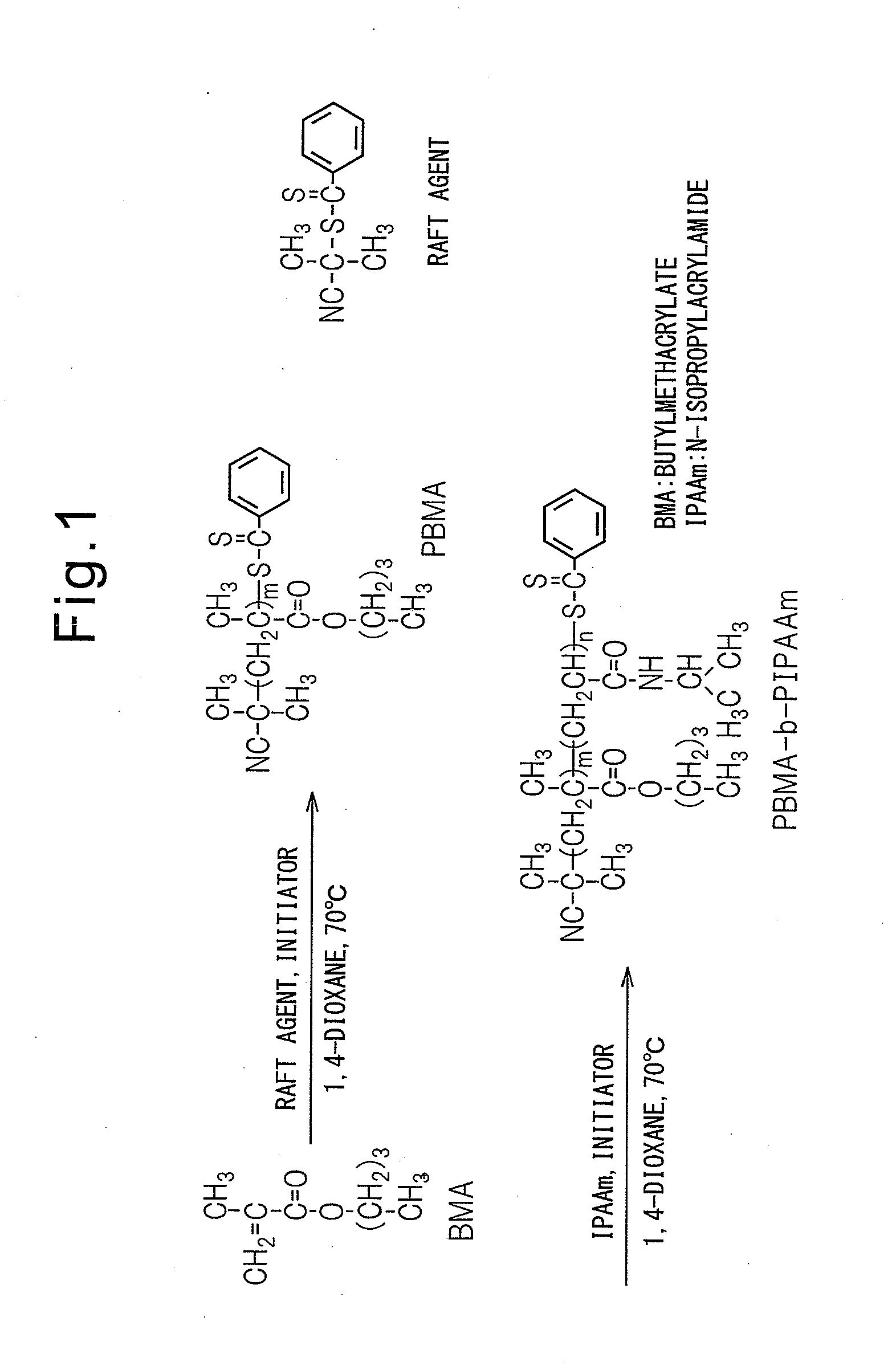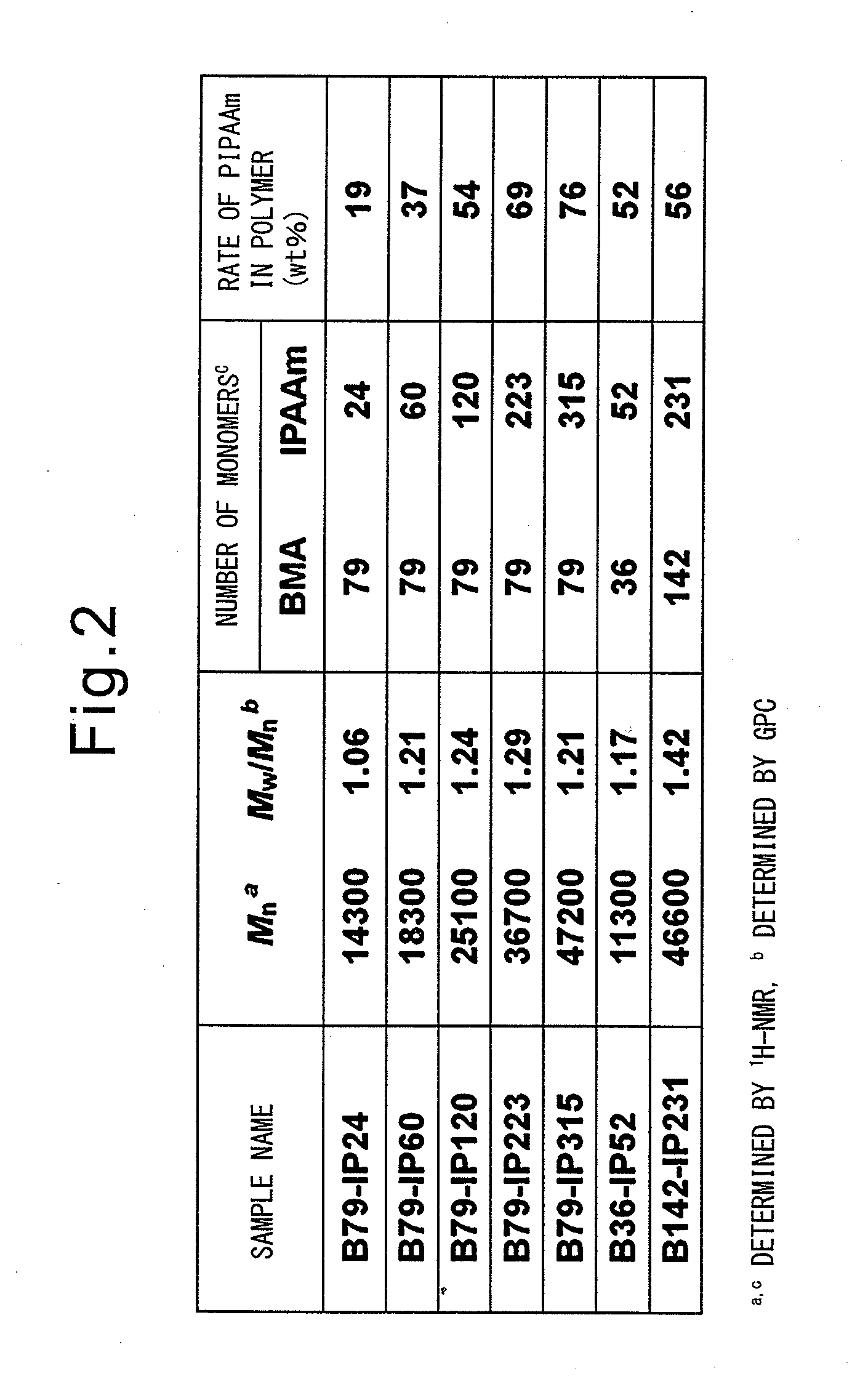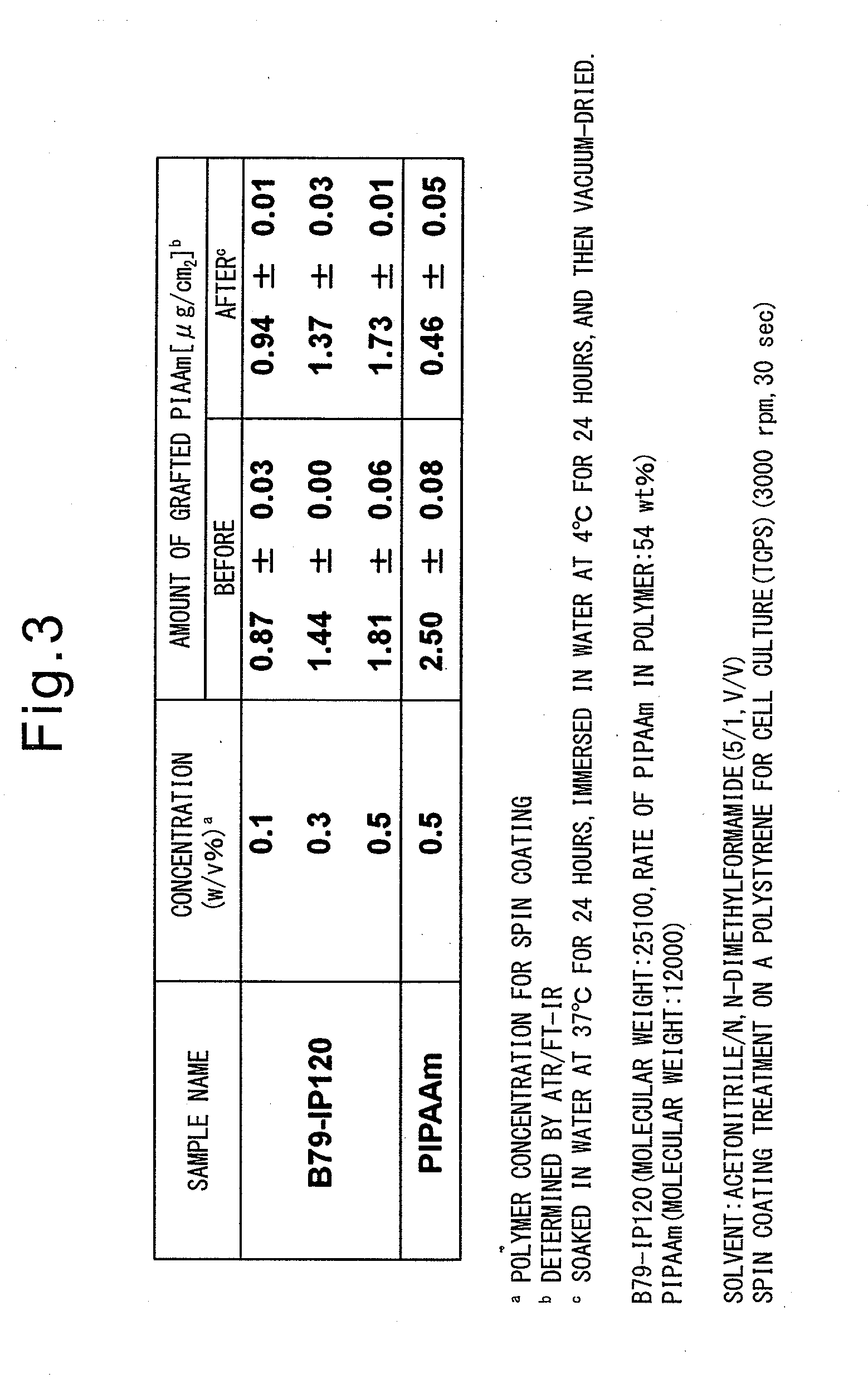Temperature-responsive substrate for cell culture and production method thereof
a technology of temperature-responsive substrates and cell culture, which is applied in the field of cell culture substrates, can solve the problems of not finding or investigating countermeasures to this problem, and the destruction of cell surface proteins, and achieve the effects of convenient preparation, efficient culture, and efficient separation
- Summary
- Abstract
- Description
- Claims
- Application Information
AI Technical Summary
Benefits of technology
Problems solved by technology
Method used
Image
Examples
example 1
Preparation and Characteristics of Temperature-Responsive Surfaces
[0059]In the present example, temperature-responsive block copolymers including a segment of poly-N-isopropylacrylamide (PIPAAm) which is a temperature-responsive polymer and a segment of poly-n-butyl methacrylate (PBMA) which is a water insoluble polymer were prepared, and spin-coated on the surfaces of the base materials. For the surfaces coated with the temperature-responsive block copolymers, physical properties such as the amounts of the polymers introduced on the surfaces and surface wettability were evaluated. Temperature-dependent change of cell adhesiveness to the substrate surfaces was also investigated.
[0060](1) Preparation of Temperature-Responsive Block Copolymer
[0061]Specifically, PBMA-b-PIPAAm block copolymers were prepared using PBMA, which is a water insoluble polymer synthesized by RAFT polymerization, as a macro RAFT agent (FIG. 1). In addition, the analysis values for PBMA and PBMA-b-PIPAAm synthes...
example 2
Investigation of Grafted Amount and Cell Behavior
[0065]According to the description of Example 1, substrates in which TCPS was coated with B79-IP120 at various concentrations were prepared. Bovine carotid artery-derived vascular endothelial cells (BAEC) were seeded on the substrates at a concentration of 1.0×104 cells / cm2, and evaluated the adhesiveness of the cells to polymer-coated substrate surfaces at 37° C., and the desorption behaviors of the cells treated with low-temperature of 20° C. A black circle in FIG. 5 indicates a TCPS substrate without coating polymer. Black and white rhombuses in the figure represent changes of cell behavior on substrates in which TCPS was coated with B79-IP120 at 0.3 and 0.5 w / v %, respectively. FIG. 5 indicates changes of cell adhesion rate (%) in the case of seeding BAEC cells on each substrate and then changing culture temperature from 37° C. to 20° C. after 72-hour culture. More specifically, the cell adhesion rates increased during the cell cu...
example 3
Detailed Analysis of Change of Cell Behavior Depending on Block Copolymers
[0067](1) Relationship between PIPAAm Molecular Chain Length and Cell Behavior
[0068]Block copolymers having the constant number of monomer units (the number of monomers) of BMA and varied number of monomer units of IPAAm were prepared according to the production process in Example 1. TCPSs were coated with the block copolymers as described in Example 1, to examine change of the adhesion rate of BAEC cells during changing temperature (FIG. 7). A cell adhesion rate was increased according to decrease of the coated amount of PIPAAm, as with the case of Examples 2. As for cell desorption depending on temperature change, it was found that slow desorption occurred in the substrate coated with PIPAAm whose amount is low (1.18 μg / cm2), compared with the substrates coated with higher amounts (1.44, 1.60, and 1.63 μg / cm2), and that prompt desorption occurred after the temperature change on the substrates coated with hig...
PUM
| Property | Measurement | Unit |
|---|---|---|
| Temperature | aaaaa | aaaaa |
| Molecular weight | aaaaa | aaaaa |
| Responsivity | aaaaa | aaaaa |
Abstract
Description
Claims
Application Information
 Login to View More
Login to View More - R&D
- Intellectual Property
- Life Sciences
- Materials
- Tech Scout
- Unparalleled Data Quality
- Higher Quality Content
- 60% Fewer Hallucinations
Browse by: Latest US Patents, China's latest patents, Technical Efficacy Thesaurus, Application Domain, Technology Topic, Popular Technical Reports.
© 2025 PatSnap. All rights reserved.Legal|Privacy policy|Modern Slavery Act Transparency Statement|Sitemap|About US| Contact US: help@patsnap.com



